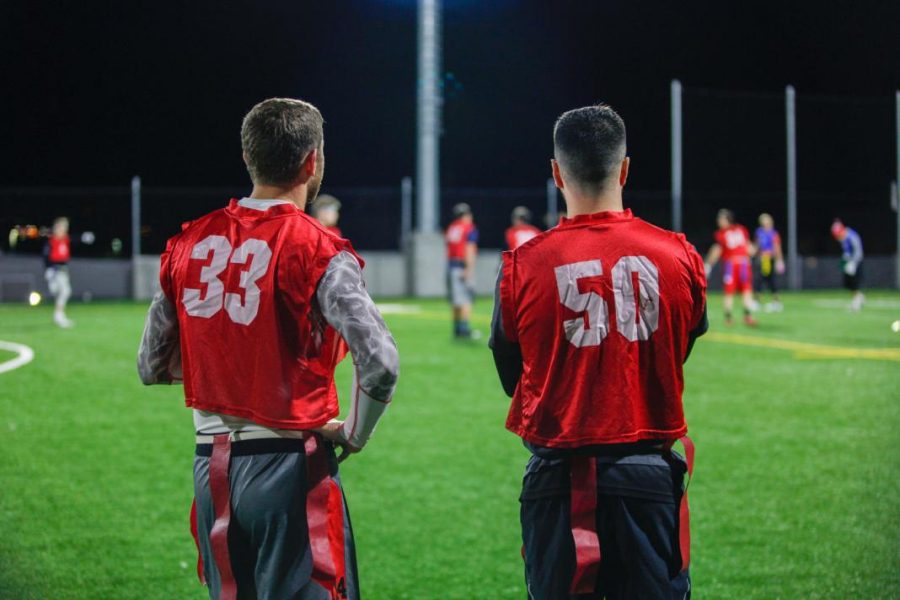Sports are a powerful way to join a community and build a positive environment. The University of Utah is host to many intramural and club teams — volleyball, sand volleyball, flag football, badminton and soccer, to name a few — but little is mentioned about how valuable these programs are for students. Intramural leagues encourage all talent levels to participate in friendly competition and engage a different student-athlete population other than the NCAA.
Intramural leagues have given students the opportunity to stay involved in athletics without the pressures of the NCAA. Chase Barney, former athlete of Dixie State University, started participating in intramural sports after transferring to the U. One of his reasons for joining the flag football team was to get back into a sport he loves. Barney has found the intramural environment to be relaxed and enjoyable. It has been a better experience for him than when he played at the collegiate level.
Former U football players, Dakota Baker and Logan Bateman, have been able to continue their passions for competition through club sports. Now as a member of the Cankle Breakers flag football team, Bateman and his teammates are enjoying their involvement with a different student-athlete community.
“I really have missed playing and competing at the collegiate level,” Bateman said. “[But] I can still enjoy the sport and play with close friends without huge time commitments.”
The Cankle Breakers are one of the many flag football teams at the U. Others include the French Toast Mafia, #7 Vick and the Killer Bunnies, which are all student organized. Intramurals offer co-ed teams, single-sex teams and Greek leagues for fraternities.
Nick O’Cain, who has been playing intramurals for five years now, believes university club sports are a great way for people to stay active and find groups to connect with. He said playing reduces stress caused by school, work and other life demands.
“A lot of people grew up playing sports through high school and weren’t really given the opportunity to play in college,” O’Cain said. “So it kind of helps them to stay in the community a little bit more, keep playing and having fun.”
NCAA sporting events often take the spotlight over intramural and club sports. Utah Athletics receive an unsurprisingly large amount of media and news coverage while other teams do not. O’Cain suggested more funding and recognition to recreational activities on campus could help increase participation. Currently, most players who want to make a team must pay out of pocket to sign up or have access to equipment. Coaches and referees are often volunteers or rely on the minimal funds that come from player sign-ups. The organization of intramural and club sports requires cooperation and contribution from university students and staff, but O’Cain said he still “absolutely” recommends it.
“If you like sports at all, intramurals are the most fun thing you can do,” O’Cain said.
The teams are accepting, supportive and enable students to make valuable connections. For those interested in joining any club and intramural sport or who just want to watch a game, check out the U’s intramural league webpage. Schedules and sign-ups are posted regularly.
@dg_maui



